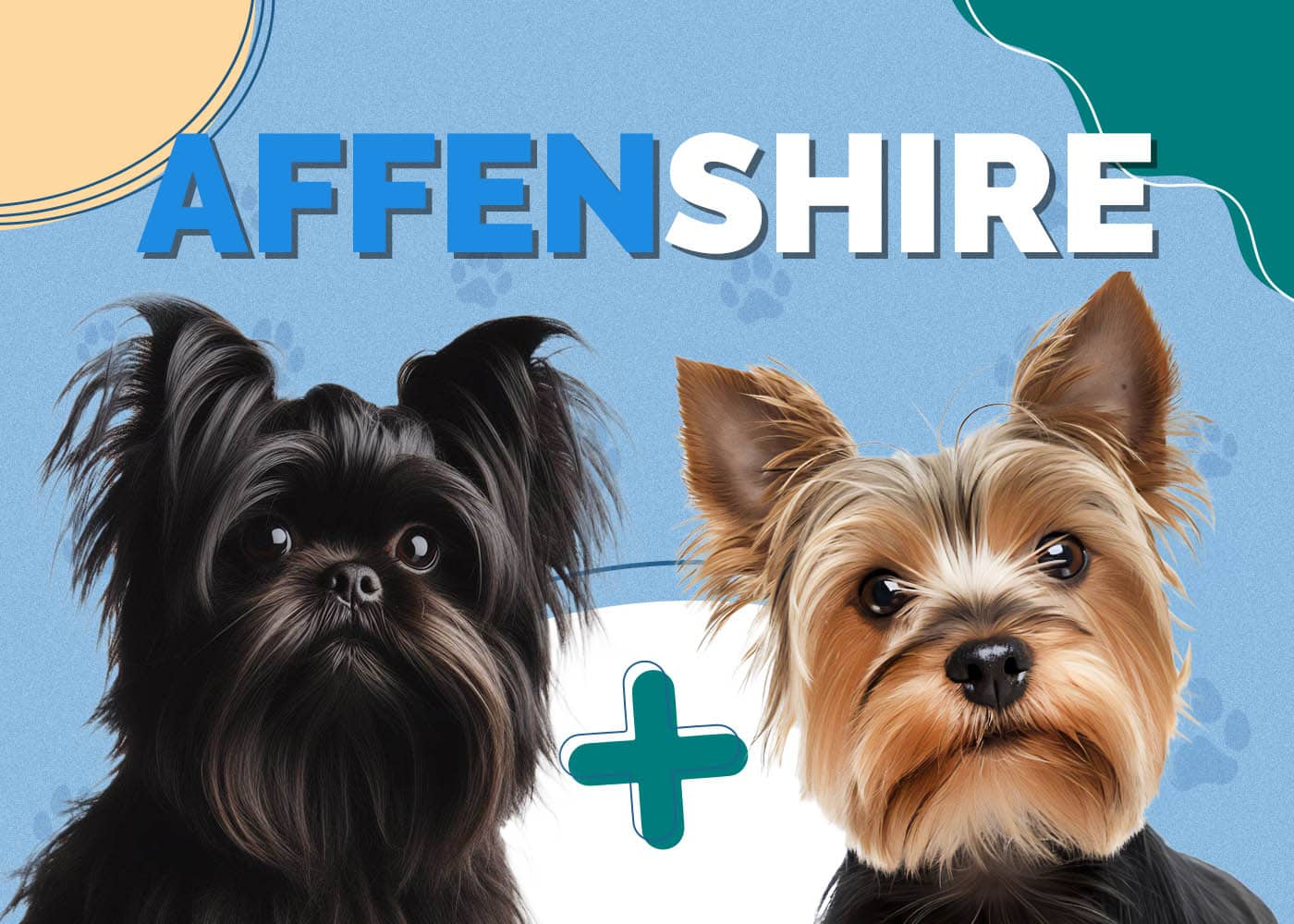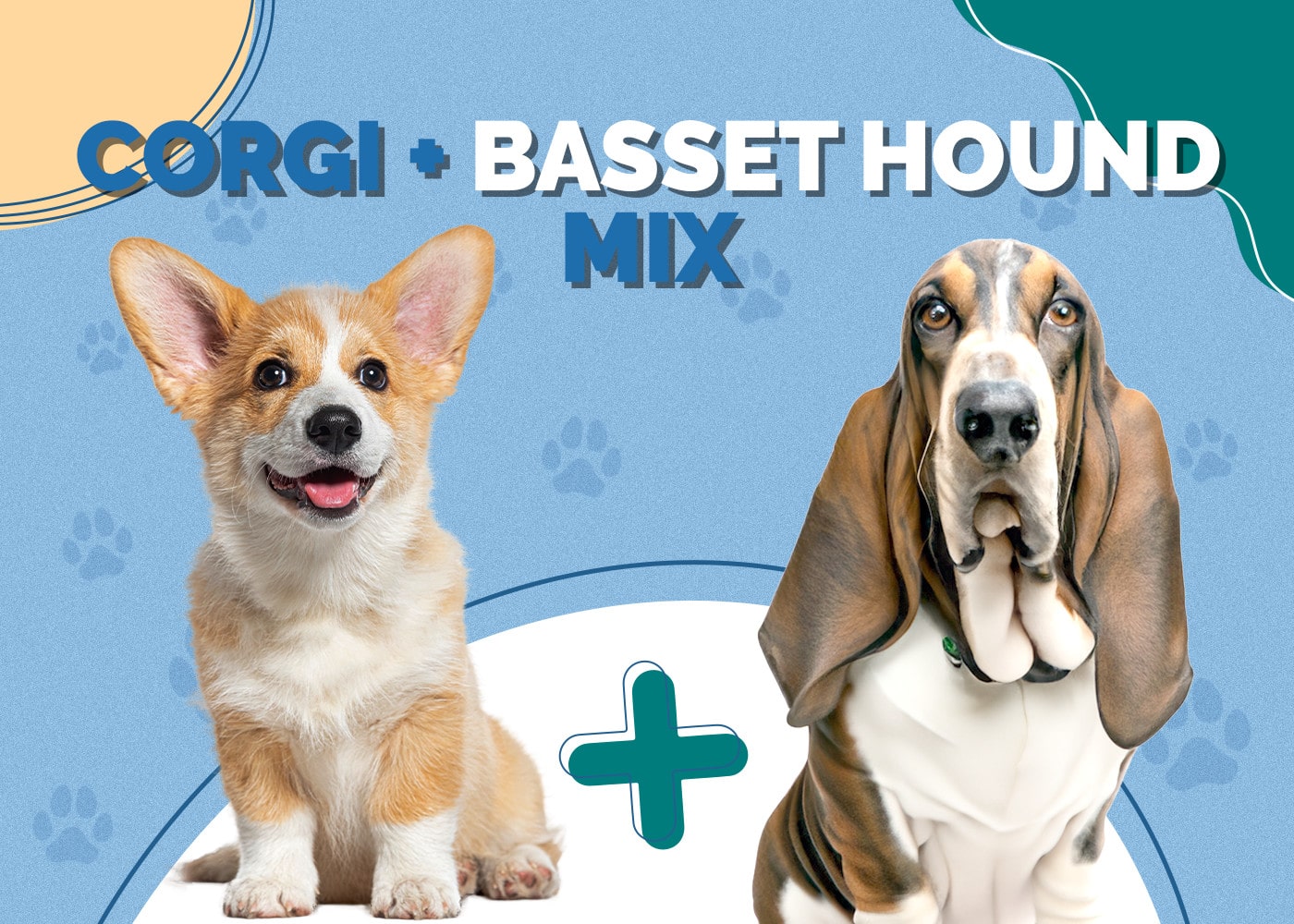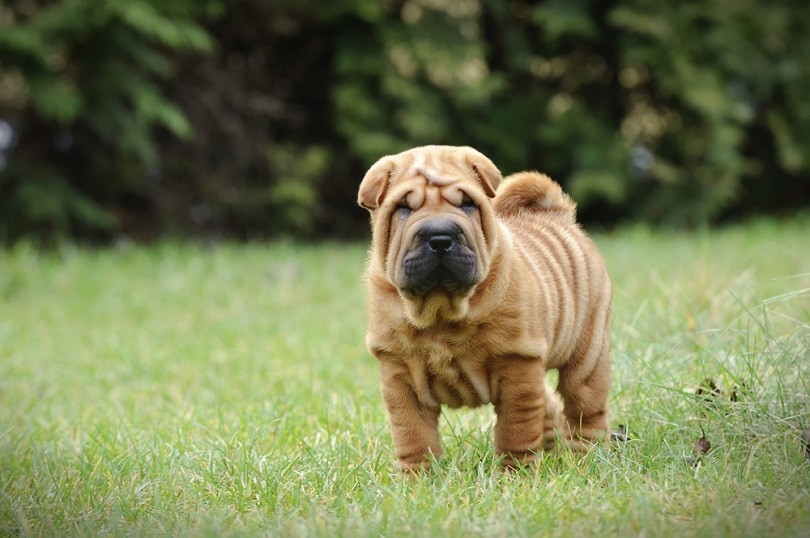Basset Heeler (Basset Hound & Blue Heeler Mix) Info, Pictures, & Traits

Updated on
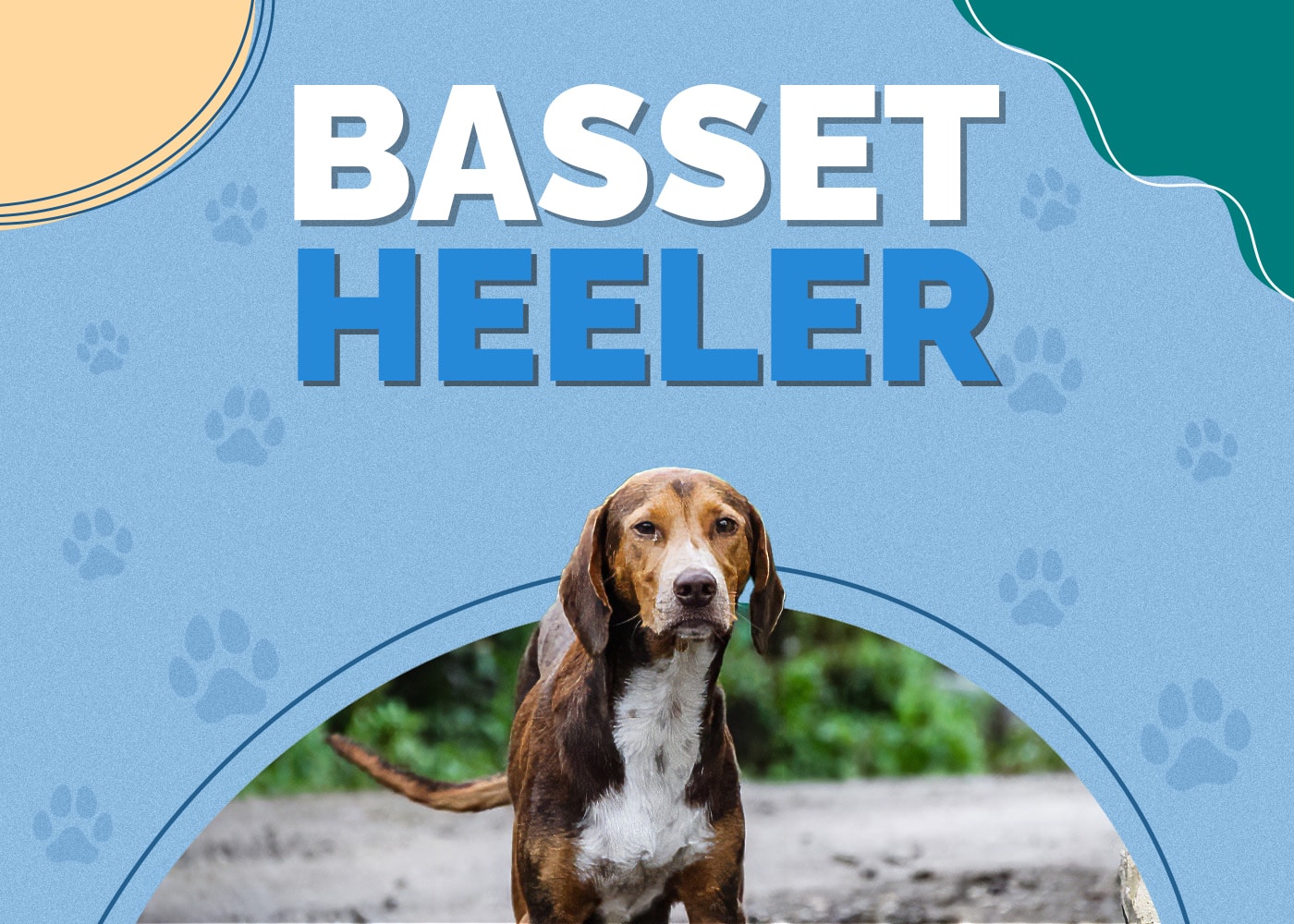
If you are looking for an energetic dog that will act as a guard dog for you and your family, the Basset Heeler is a good option. This medium-sized pooch is a bundle of playfulness that is loyal, protective, and intelligent. Bred from two working dogs, the Basset Hound and the Blue Heeler (Australian Cattle Dog), this pup will fit right into a rural setting where they can spend a lot of time outside.
This dog makes a great running buddy, an excellent cat herder, and an almost perfect alarm system. They take their duty as a guard dog very seriously, and their devotion to the well-being of the humans in their care is astounding. Be that as it may, no one is perfect, including this pup, but we will get into that later.
| Height: | 16-18 inches |
| Weight: | 33-40 pounds |
| Lifespan: | 10-15 years |
| Colors: | Blue, blue mottled, blue speckled, red mottled, red speckled |
| Suitable for: | Active families looking for a guard dog, homes with large yards, people that enjoy lots of exercise |
| Temperament: | Protective, loyal, independent, energetic, devoted |
If you are considering adopting a Basset Heeler, this is an article you want to read. Below, we will go over all the details of this designer breed. Pet ownership is a big responsibility, and it’s important to school yourself on all your potential pet’s care before taking them home with you.
So, if you are interested in making this hound heeler mix a part of your family or you are just curious about this designer breed, the info below will be well worth the read.
Basset Heeler Characteristics
Basset Heeler Puppies
All puppies have a certain cute capacity that can attract even the toughest person. When it comes to the Basset Heller, their floppy ears, oversized paws, and wagging tails are nothing short of adorable. You can expect this puppy to have a lot of energy, curiosity, and a tendency to chew.
If you want to get the best picture of this puppy, however, it’s important to look at their parents. Designer breeds are relatively new to the canine community, so details and documentation can be on the lean side. For example, the origins of the Basset Heeler are unknown, but it’s thought they originated in the United States around the 1980s.
It is generally believed they were bred to create a protective companion that was strong and healthier than their purebred parents. The Basset Hound, for example, originated sometime before the French Revolution, and they were mostly rabbit hunters. The Blue Heeler, otherwise known as the Australian Cattle Dog, was a cattle-herding animal and guard dog.
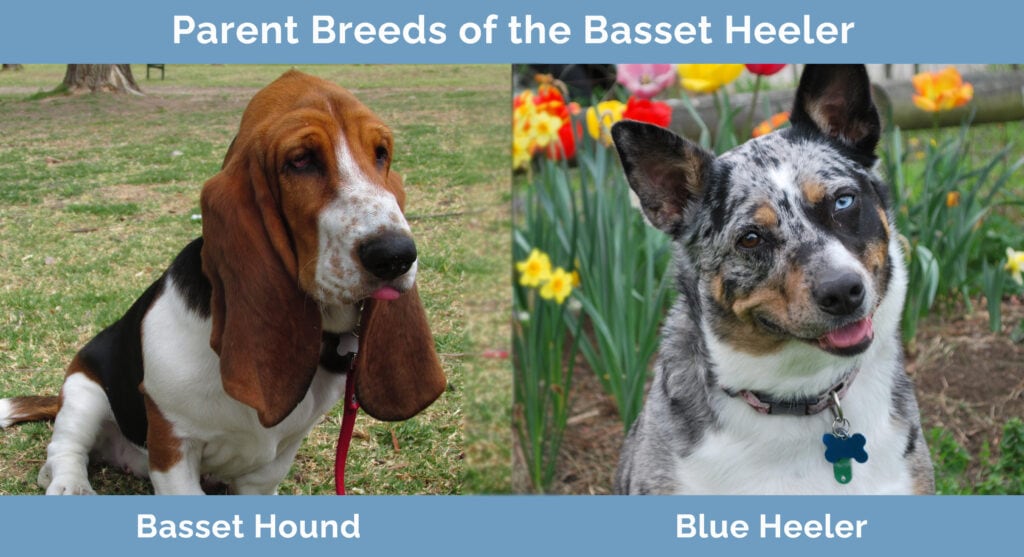
Temperament & Intelligence of the Basset Heeler 🧠
The Basset Heeler is an energetic, happy, and loyal family companion. They have a very strong protective instinct, and they make great guard dogs. This is also an intelligent dog that does well with various jobs and tasks to keep them entertained. Playing fetch, herding, and playing other games is right up their alley and inlines with their high activity level.
This is a devoted pet that, above all, wants to protect their pet-parents from anything that seems like a threat. This includes strangers regardless of how many legs they walk on. You will need to take precautions when you have visitors or have your BH around new people. They can become aggressive if they are not comfortable.
This is also an independent pup with a fair amount of tenacity. They need a strong hand to be the leader and guide their behavior. Of course, they are also likely to test the dominant position to see if they can gain the upper hand. Once you have established yourself as the pack leader, they will be loyal, devoted, and loving towards you.
The Basset Heeler is also okay to spend some time alone. They are not prone to separation anxiety, but it’s important to keep them well exercised and entertained. Boredom and inactivity are one of the biggest challenges with this canine. They can become destructive and aggressive if they are left to laze about. In the training section below, we will talk more about keeping them active.
Are These Dogs Good for Families? 🏡
Basset Heeler will make a great family companion. They will be a loving, protective, and a playful addition. They thrive in a family unit atmosphere, and they enjoy being a part of the group – invited or not.
Does This Breed Get Along With Other Pets? 🐶 😽
Whether or not this breed is good with other animals can depend on their early socialization, but for the most part, they do better when they are the only canine. As this pooch has a somewhat dominant nature with some territorial habits, things can get interesting when you add another pup to the mix.
That being said, the Basset Heeler can do well with other pets such as a cat. For the most part, they will either ignore them or herd them around while acting bossy. This holds true for other smaller pets, but as this pup is a medium-sized active canine, play dates with a Hamster are not recommended.
Things to Know When Owning a Basset Heeler
Food & Diet Requirements 🦴
When it comes to your dog’s food requirements, you should consult your vet to get their recommendations on the right diet for their age, size, and health. That being said, the AAFCO recommends that you give your pup 30 calories per pound of body weight per day. They should also get a minimum of 18% protein, 5.5% fat, and 1% fiber with each meal.
Besides those basic nutritional values, you should also give your pet a diet that is rich with vitamins and minerals. Lean proteins, healthy whole grains, and other ingredients will give them the nutrients they need to be healthy. This is also true of the treats you provide. Table scraps, in general, are not good for your pet. You should also make sure their snacks are low in sugars, unhealthy fats, and processed ingredients.
Beyond that, the choice of recipe is up to you and your pooch. Thankfully, this breed is not prone to food allergies or pickiness. Dry, raw, or home-cooked meals are usually the most nutritious, but some canned foods can also offer benefits. Mixing these meals is also acceptable (mixing wet and dry food), but be careful about switching up their diet. It can cause tummy stress for your pet.
Exercise 🐕
Did we mention this breed is very energetic? They require at least 60 minutes of exercise per day in the form of walks, runs, jogs, or anything else you enjoy doing. They will also need additional playtime in the yard or at a dog part.
This breed does well with activities such as fetch, chase, and running. They also like to have tasks and other jobs to complete. Whether that is chasing your cat around, jumping over fences, or whatever it will give them added stimulation.
The most important thing to remember is that the Basset Heeler does not react well to inactivity. They can become destructive by chewing, digging, and generally causing mayhem. They can become aggressive, as well. On the other hand, this pup is not prone to outbursts when left alone. As long as they are given proper exercise, they can be left alone to play for moderate amounts of time.
Training 🦮
Training your BH is not difficult due to their intelligence and eagerness to learn. With that being said, it is their independence, stubbornness, and ability to push the dominance issue that can make training take longer. Starting training as early as possible is essential for a well-rounded pup.
Dominance, obedience, and socialization are the three elements that you want to master, not to mention, potty training. The latter is typically the easiest, but the other three will take time, patience, and consistency. Setting yourself up as the pack leader right away will show your BH who is boss. They will learn to take their behavioral cues from you.
You also want to concentrate on positive reinforcement as a training tool. Giving your pup a treat when they do well is a tried and true method for getting your pet on board with house rules plus other commands. Anger, in this case, will only work against you. Keep the lessons short and fun. The more consistent you are with the training, the quicker this little mongrel will catch on to what you are trying to teach.
Grooming ✂️
The Basset Heeler has a short, dense coat that requires minimal grooming. You should brush their fur with a soft bristle brush every other day to remove any loose hairs. During the shedding season, you can increase it to a daily activity. For the most part, the Basset Heeler has minimal to moderate shed, but it can be more intense during the change of seasons.
This breed also doesn’t have a strong “doggie odor” so baths are only needed when they get particularly dirty. As we mentioned above, their coat is water-resistant. Oils that the hair produces keep moisture from reaching their skin. It also helps keep their coat shiny and soft. For that reason, you should limit baths to once every 6 to 8 weeks or less. With a water-resistant coat, your pup will stay damp longer. If the weather is cold, make sure they are completely dry before heading outside for any extended periods.
Ears, Teeth, and Nails
The three other areas you want to keep an eye on are their teeth, ears, and nails. Their ears should be inspected for mites and wax build-up every few days, and you should wipe them clean weekly. You can use a cotton ball with either warm water, or a dog ear cleaning solution.
Their teeth should also be cleaned weekly. This breed tends to have a better track record with dental hygiene than other breeds, but it’s important to keep up with brushing. Beyond that, you should have their teeth inspected by your vet annually to check for any signs of trouble. Dental treats and gels are also helpful at removing and preventing tartar.
Finally, you will need to trim your BH’s nails every 2 to 3 weeks. If you live in a more urban area where you spend a considerable amount of time walking your pup on the pavement, you may not need to file their nails as often. The asphalt will naturally do the job for you!
Health and Conditions ❤️
One of the more popular reasons why designer breeds were bred in the first place is because they often don’t suffer from the health issues their purebred parents are prone to get. This is yet to be any conclusive evidence to support this theory, but it is generally accepted that hybrids are more likely to live healthier lives.
Be that as it may, if your pup’s parents suffer from a specific ailment, or their ancestors have had an illness, it is possible for your Basset Heeler to also develop health issues. Luckily, this breed is not prone to a lot of conditions.
- Some minor conditions to look for are ear infections, skin rashes, and arthritis as they age.
- Some Basset Heelers have developed progressive retinal and cnogenital heart disease, although the chances are not high.
Again, there is little documentation regarding designer breeds, so there is always a possibility that your pooch could end up with other problems during their lifetime. You should schedule annual checkups with your vet, and watch for other signs that are outside of the ordinary.
Male vs. Female
Without decades of research and documentation on designer hybrids, the difference between the male and female Basset Heeler is not clear. Certainly, there are basic differences such as the male is bigger and taller in size. They also have a broader chest than the females.
Besides that, the differences are more likely to revolve around aspects of their life, such as their upbringing, health, age, and lifestyle versus their gender. Whether or not the animal has been spayed or neutered can also make a difference.
3 Little-Known Facts About the Basset Heeler
1. They have commonalities with ducks.
Have you ever noticed that water rolls off a duck’s feathers? Well, a BH’s fur does the same thing. Their coats are water-resistant, and although it is not as “waterproof” as a duck’s feathers, it has a similar effect.
2. They do not drool much.
Neither the Basset Hound or the Blue Heeler tends to drool, and their offspring are the same. This is helpful if you have sensitivities to a dog’s saliva which can make you itchy and, in some cases, break out in hives.
3. They most often resemble their Blue Heeler parent.
Even though the Basset Heeler can develop personality traits from either side of the family, they mostly take after their Blue Heeler parents in appearance. Their blue or red coat comes with the beautiful markings, along with their floppy ears.
Final Thoughts
Overall, the Basset Heeler is a great companion for a family or a single individual. They will be a great guard dog, plus they will protect you with their life. Ideally, someone with a big backyard who enjoys being outside and lives a very active lifestyle is best. Your pup will be eager to follow you on any and all adventures.
Pet adoption is a big responsibility, but the rewards can far exceed the sacrifices. This playful and beautiful dog gets the best of both parent’s traits. Not only that, but they don’t drool, smell, and have minimal grooming. Even better, they will create a solid bond with the family and bring a measure of safety to your home. In conclusion, the Basset Heeler is a great pet to own!
Related Reads:
Featured Image Credit: Pikist





